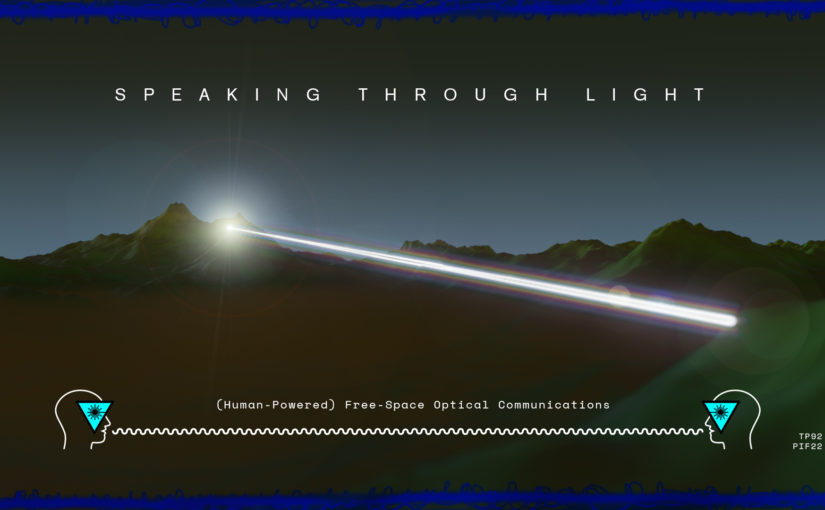The electromagnetic field is a widely used medium for the transportation of information. Yet its use through free space propagation (meaning not using fiber-optic or electric cables) is mostly limited to the invisible radio spectrum. Those radio waves at comparably low frequencies can travel through walls, beyond mountains, and interplanetary dust clouds, and usually don’t keep us from sleeping. Visible light, on the other hand, can be blocked by a single fly alone and also might annoy us if it flickers through the night.
This week we do not want to be bothered by flashing lights and insects interrupting our communication channels. We want to explore how sound-carrying light looks like, how living nature alters the light, and how this affects the tonal properties of the sound. We would look at light as a specific form of electromagnetic radiation and use software-defined radio technology to modulate and demodulate the streams of photons. We will experiment with loading information onto a visible carrier wave through amplitude, frequency, and phase modulation. Not only sound can be sent via light, but also poems and pictures. Sound to light to music. Words to light to poetry. Light to light to light.
The vast landscape of Triglavski narodni park offers the perfect dimensions for long-range light transmissions. A hike will take us to an elevated place so we can deploy our (hand-crank operated?) laser walkie-talkies. We will get within line of sight and then we will speak through the light.
Speaking through light is a project by Thomas Preindl.
